Visayan Festivals – January
The three biggest Visayan Festivals take place in January every year, attracting national and international tourists. The Festivals are so popular that it’s often difficult to find somewhere central to stay unless booked months ahead.
Many visitors willingly put up with sharing one room with lots of friends, taking it in turns to sleep on the floor or the beds available. Or staying outside of the immediate festival area and traveling in for the parades and dance competitions.
Such is the draw of the big three Visayan Festivals!
Ati-Atihan – Kalibo
The Ati-Atihan Festival is arguably the oldest and original of the three big Visayan festivals. Ati-Atihan takes place on the third Sunday of January every year.
Outlying provinces hold their own local version of the festival the Sunday before, or after, the official Ati-Atihan Festival.
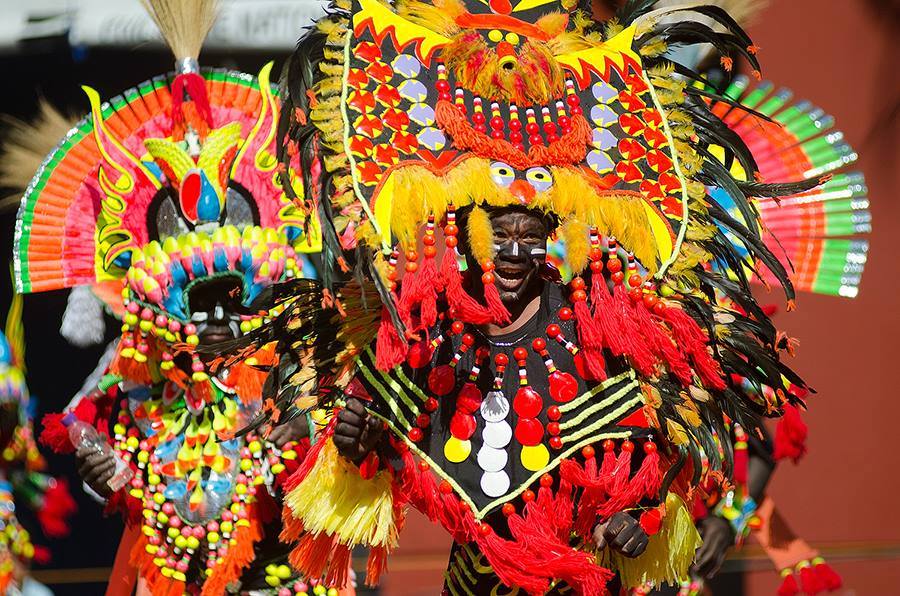
Ati-Atihan translates as “to be like Aetas”, the original settlers/inhabitants of Panay Island, and it is a combined Festival. It honors the areas tribal and pagan origins and celebrates the miracles of the Santo Niño; child Jesus.
The Ati-Atihan Festivals stand out feature is the black body paint on the parade participants, which also gives the perfect background to the vibrant and colorful costumes.
Festivities take place leading up to the main parade on the Sunday. These include Tribal Dance Displays, Music, parade of indigenous costumes and weapons and finishes with a parade along the main street of Kalibo.
Because the Festival covers the areas pagan past, as well as honouring the Christ child, it is enjoyed by both Christians and non-Christians
Cebu’s Sinulog Festival and Iloilo’s Dinagyang Festival both stem from Kalibo’s Ati-Atihan Festival.
Check here for Festival details Ati-Atihan
Sinulog Festival – Cebu
The Sinulog-Santo Niño Festival is a long cultural and religious festival completing with a grand parade. The first Sinulog Festival took place in 1980, inspired by Kalibo’s Ati-Atihan Festival. The Grand Parade takes place on the 3rd Sunday of January.
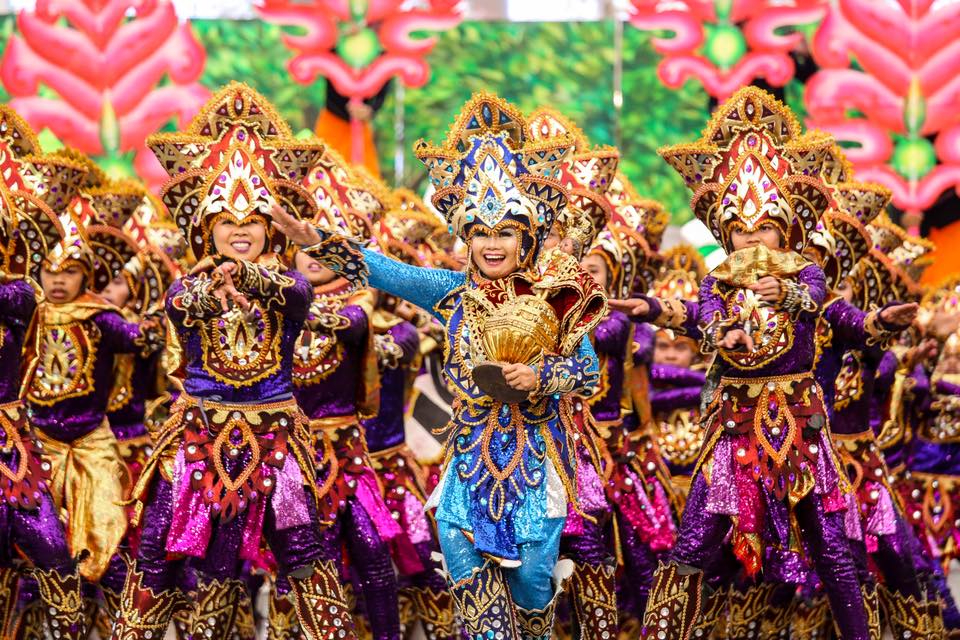
Sinulog translates as “like water current movement”. This describes the flow of the forward and backward steps used in the original Sinulog prayer/dance, which was done to the beat of a drum.
The Sinulog dance was used by the original settlers, when honoring their pagan gods. Later, the conquering Spaniards witnessed the dance also being used to honor the Santo Niño de Cebu.
The Santo Niño de Cebu was a gift from Ferdinand Magellan to rulers Rajah Humabon, and his wife Hara Amihan (who became Carlos and Juana of Cebu). The gift was given to commemorate their baptism in to the Christian faith in 1521. The original statue is permanently located at the Basilica del Santo Niño in a bullet-proof display cabinet. It is the oldest religious statue in the Philippines.
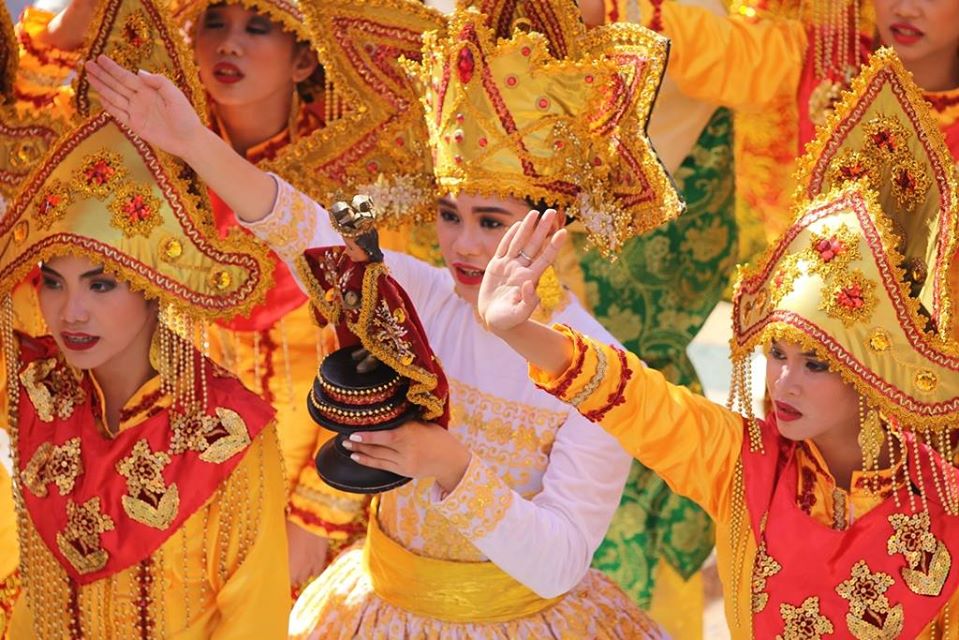
The festival starts weeks before with a dawn procession of a replica of the Santo Niño de Cebu, followed by nine days of Novena Masses. Another dawn procession reunites the Santo Niño with the Nuestra Senora de Guadalupe and these are then brought back to Cebu in a fluvial procession. The fluvial procession completes with a re-enactment of the first baptism and a Pontifical Mass.
Throughout the week various activities and events take place, including beauty pageants, film-making competitions and activities celebrating the Arts. The main part of the Sinulog Festival takes place on the third Sunday of January. It can attract anywhere between 1 and 2 Million festival goers each year.
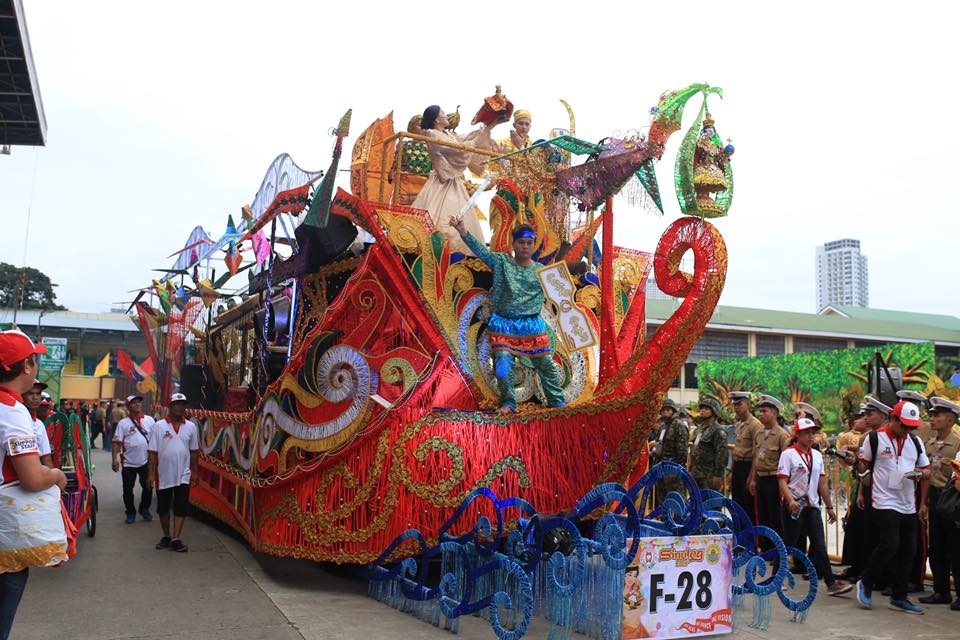
The final Grand Parade originally boasted participants from the different provinces of Cebu. Now it includes entries from other islands, Manila and even international entries. Prizes are awarded across different categories; interpretive dance, traditional Sinulog dance, best float and best Higantes (giant puppets).
Check for details of the Sinulog Festival here
Dinagyang Festival – Ilo-ilo.
The Dinagyang Festival is a religious and cultural festival which is held on the fourth Sunday of January. It is the second oldest Festival in the Visayan region and was awarded the Best Tourism Event, three times in a row (2006, 2007 and 2008).
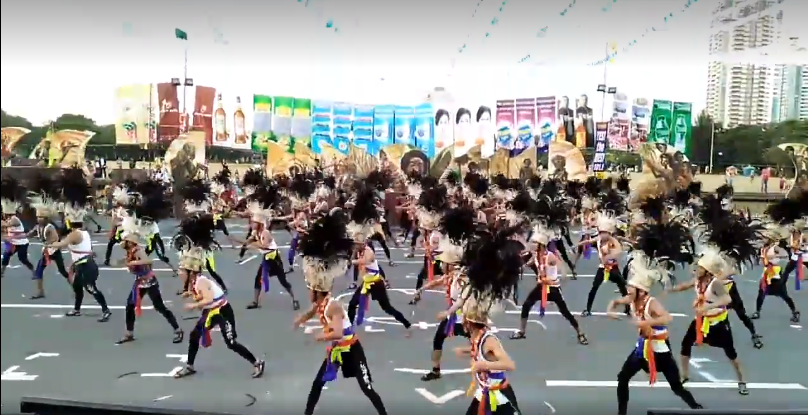
As with the other ‘Big Two’, Dinagyan celebrates the Santo Niño de Cebu and the areas Ati settlers. There are three main competitions. The Ati Tribe Competition takes place on the Sunday and features “warrior” tribes dancing, in colorful and feather-strewn costumes, chanting to drum beats and percussion instruments. Barangays, schools and colleges enter dance teams in to this event but it is rare that any Ati Tribes actually take part. The competition has recently been renamed as the Dinagyang 360° Competition. It is held in an arena which offers 360° views
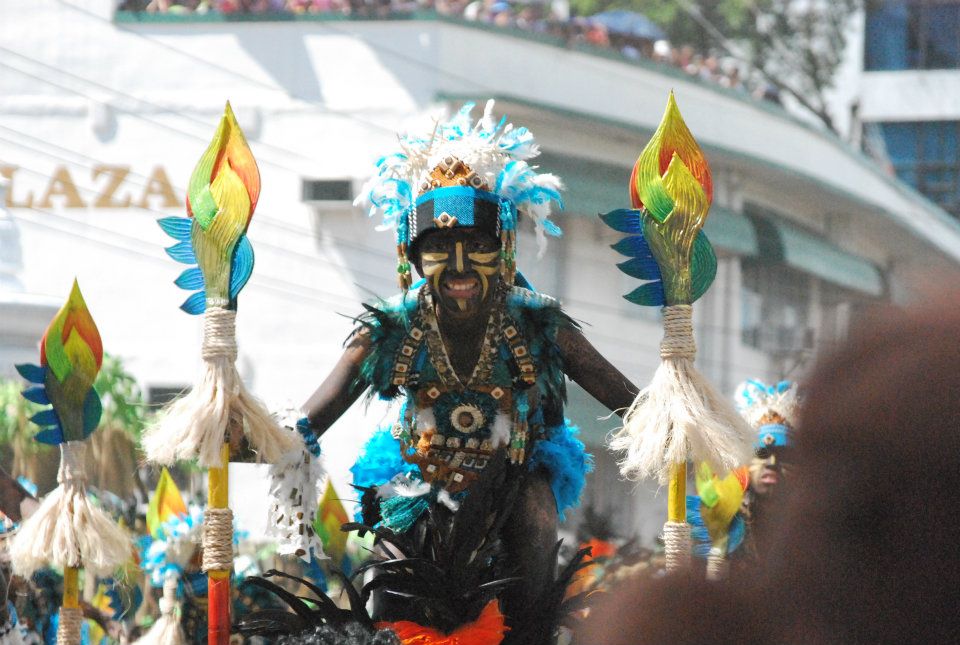
The Kasadyahan Cultural Competition is held the day before, on the Saturday and the Miss Iloilo Dinagyang takes place during the week. A fluvial procession takes place on the Friday with a replica of the Santo Niño de Cebu.

The statue is taken up the Iloilo River, from Fort San Pedro to Muelle Loney street on boats, before continuing in a foot procession to San Jose Parish Church.
The Street Dancing Parade takes place along the main streets of Iloilo and includes four performance stages, where the troupes stop to give a choreographed dance display, which is judged.
For the latest details of competitions, events and activities – check out their facebook page Iloilo Dinagyang 2020
The 15th Bacolaodiat Festival – Bacolod City, Negros Occidental
The Bacolaodiat Festival takes place annually on and around the Chinese New Year. In 2020, the Festival will be held after the Chinese New Year, for the first time ever, on 31 January – 2 February.
The festival gets its name from “Bacolod” and “Lao Diat” which is the Fookien word for celebration.
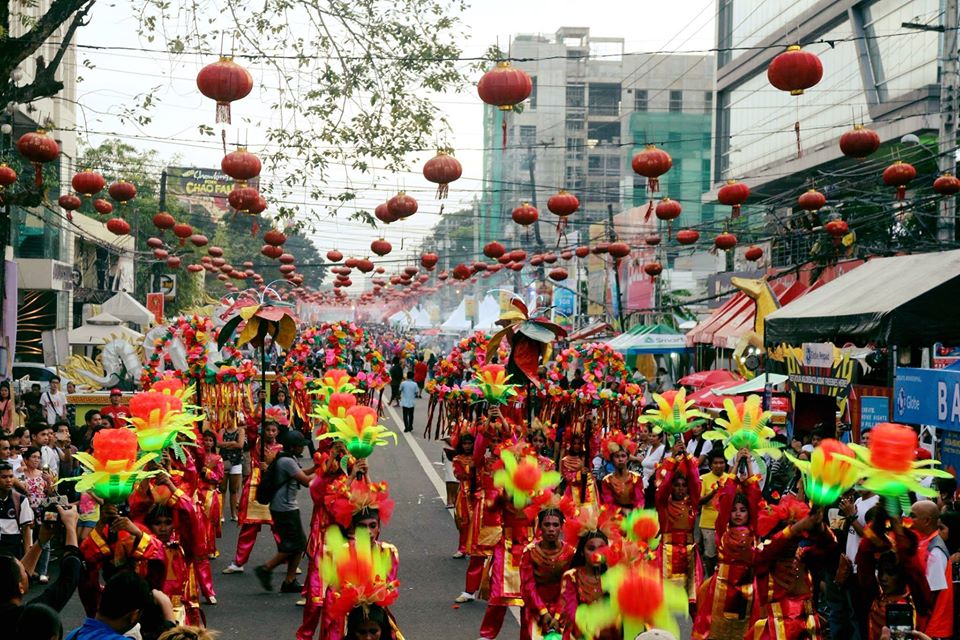
This is a three day event, held across two sites; North Capitol Road at the Tourism Strip on Lacson Street and the Bacolod Government Center.
The festival starts with a traditional Grand Motorcade and Parade of Tsinoy’s (Chinese-Filipinos), in their Chinese-inspired costumes. Nightly musical fireworks displays take place and the Bacolaodiat Imperial Village puts on displays of Asian arts and crafts, a wishing tree, and palm reading. Chopsticks Alley offers Chinese food and cooking demonstrations.
For more information check the facebook page Bacolaodiat Festival
Visayan Festivals in February
Salakayan Festival – Miagao, Iloilo: The Festival celebrates Miagao’s past and the bravery of its ancestors against the Moro marauders.
Kali-kalihan Havest Festival – Salvador Benedicto, Negros Occidental: 6 February. Cultural festival celebrating the art of “Kali” (Arnis), a form of Martial Arts.
Bulang-Bulang Festival – San Enrique, Negros Occidental: 9 February. Celebrates the towns cockfighting history and its patron saint, Nuestra Señora de Candelaria.
Utanon Festival – Dalaguete, Cebu: 9 & 10 February. A celebration of the areas main produce; vegetables, through music and dance, thanking and honoring the town’s patron saint, San Guillermo de Aquitania.
Bod-bod Kabog Festival – Catmon, Cebu: 10 February. Celebrating the local delicacy Bodbod with street dancing competitions
Paraw Regatta – Oton & Iloilo City, Iloilo: Third week of February. An annual regatta paying tribute to Paraws and the sailing traditions of Ilonggos. The Iloilo Paraw Regatta is believed to be the oldest traditional craft event in Asia, and is the largest sailing event in the Philippines.
Tawo-tawo Festival – Bayawan City, Negros Oriental: 17 February. Scarecrow Festival, celebrating protection of the crops by these effigies. Giant scarecrows are paraded down the streets and the festival includes Street dancing competitions.





Nice Article
https://waterfallmagazine.com
Excellent article! We will be linking to this great article on our website.
Keep up the great writing.